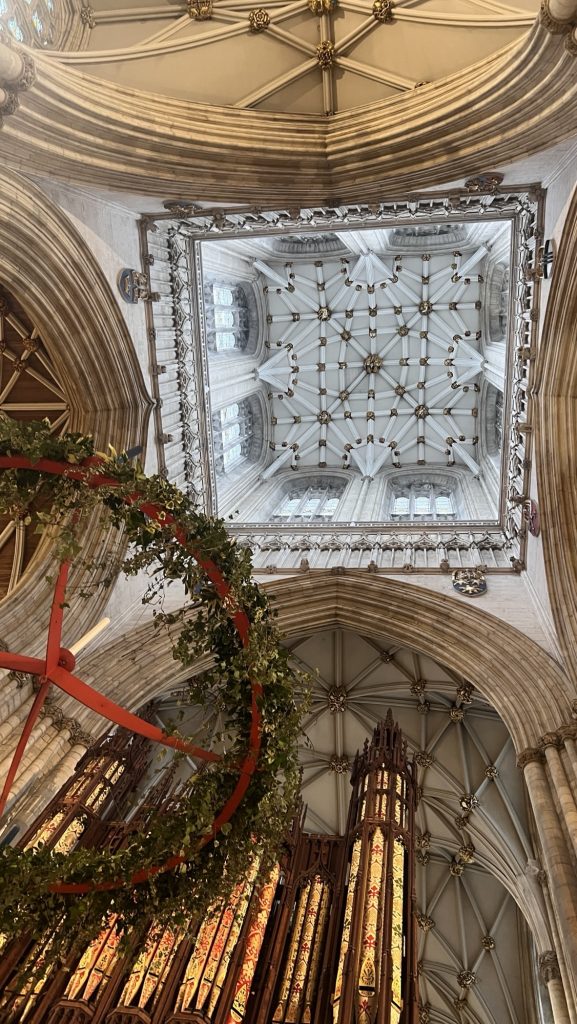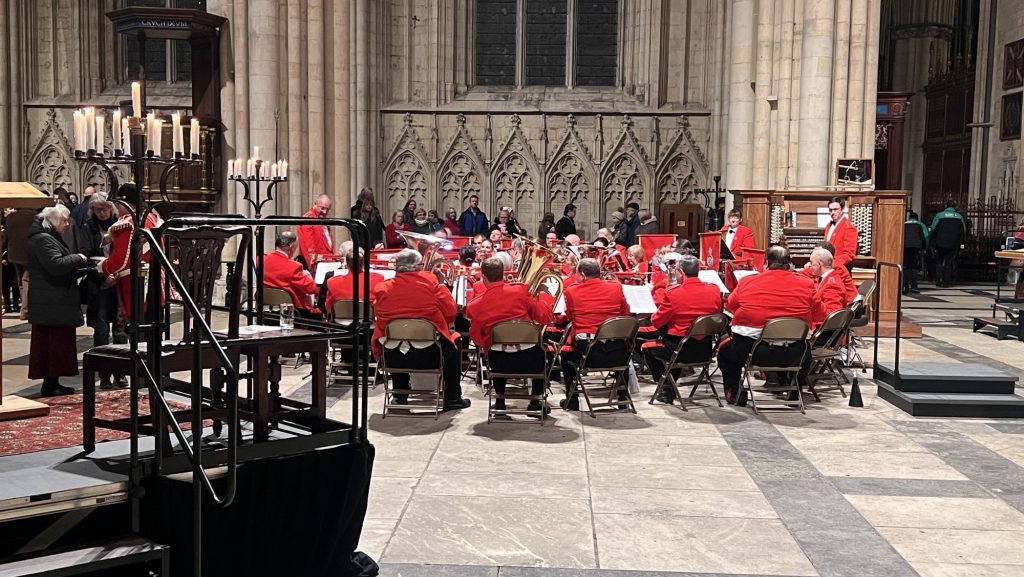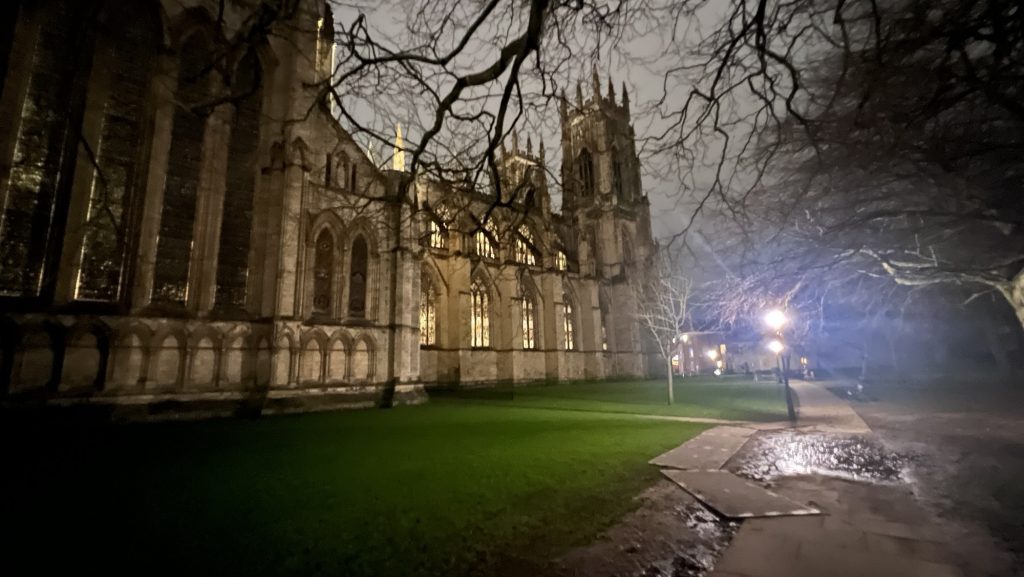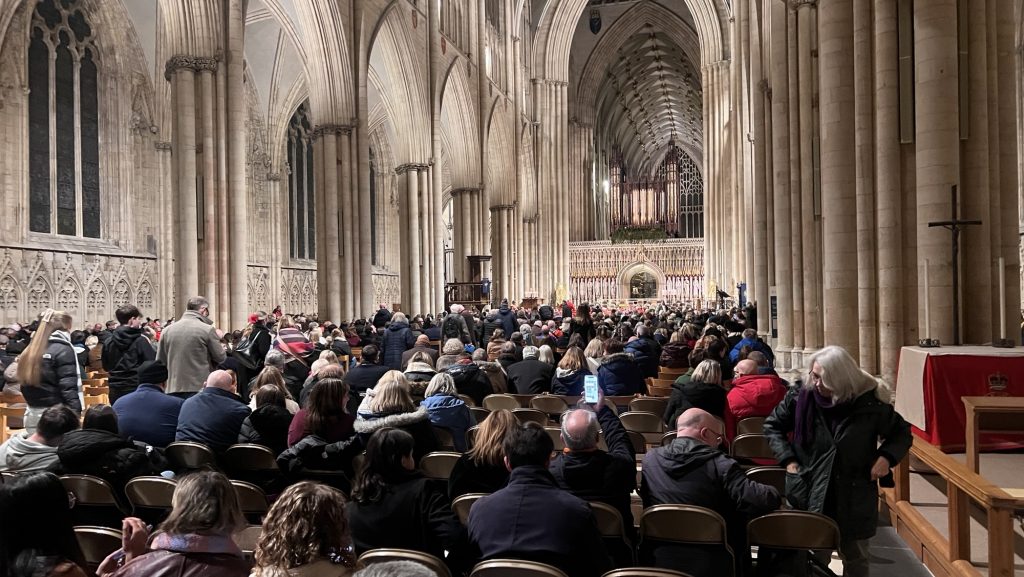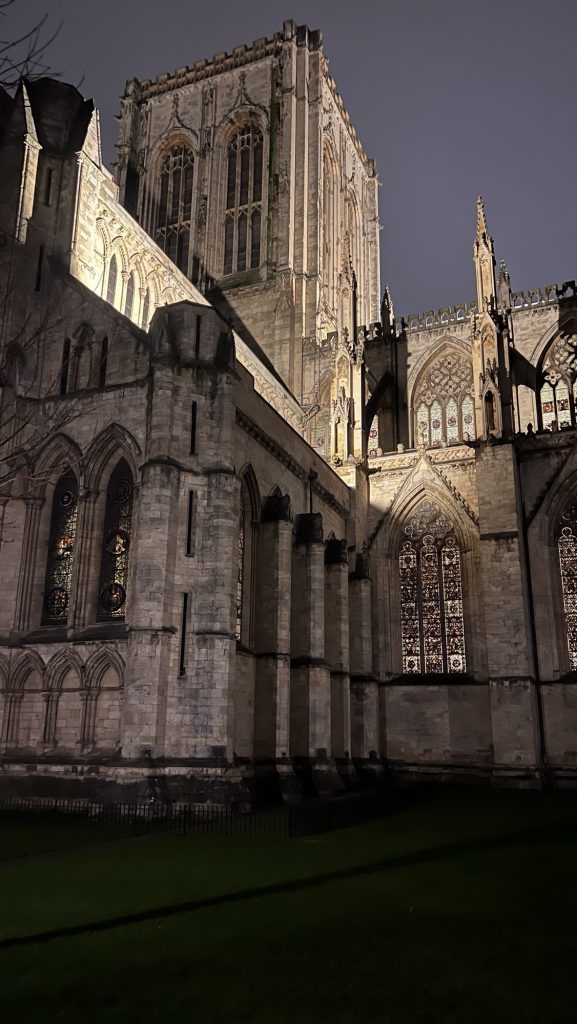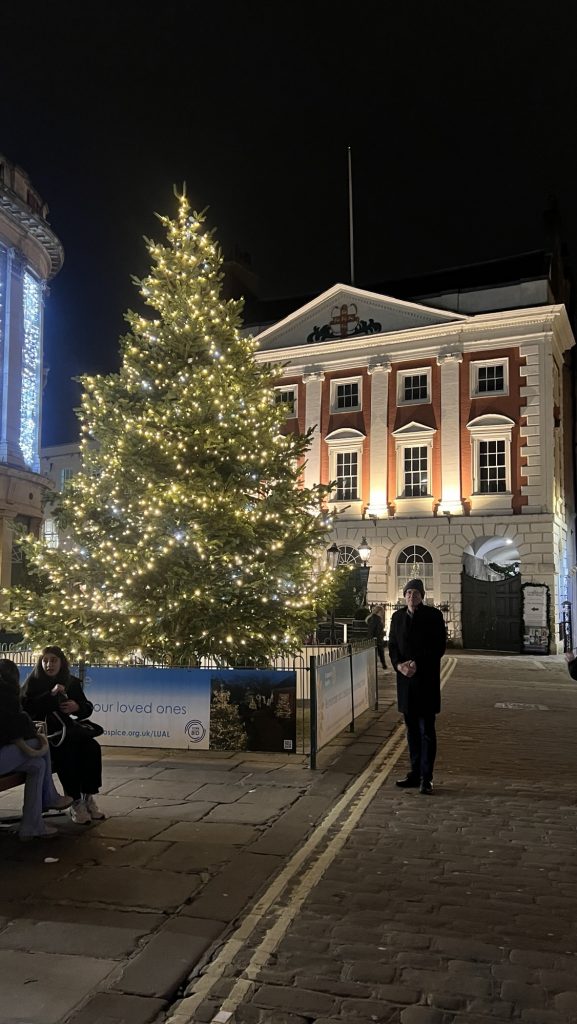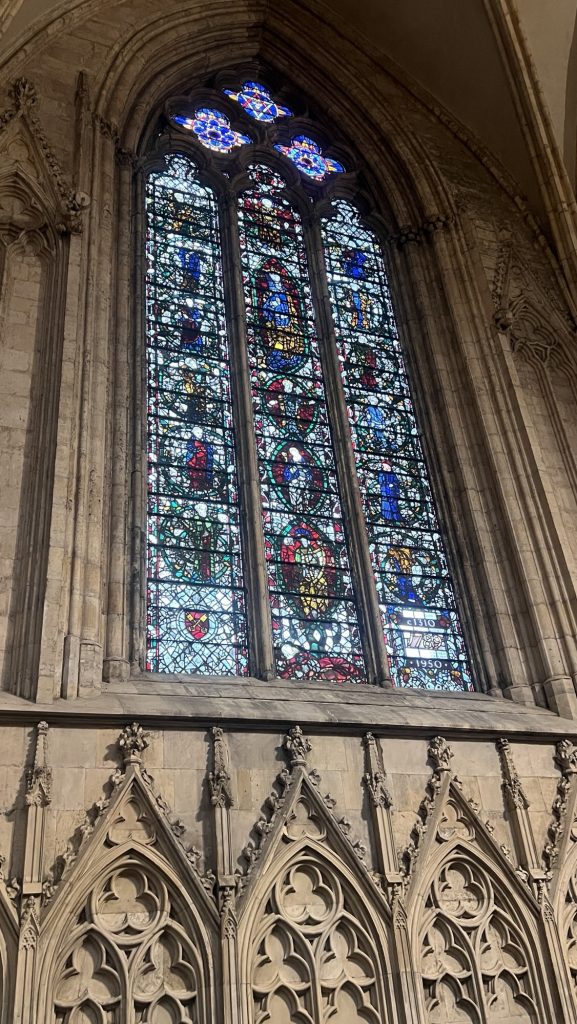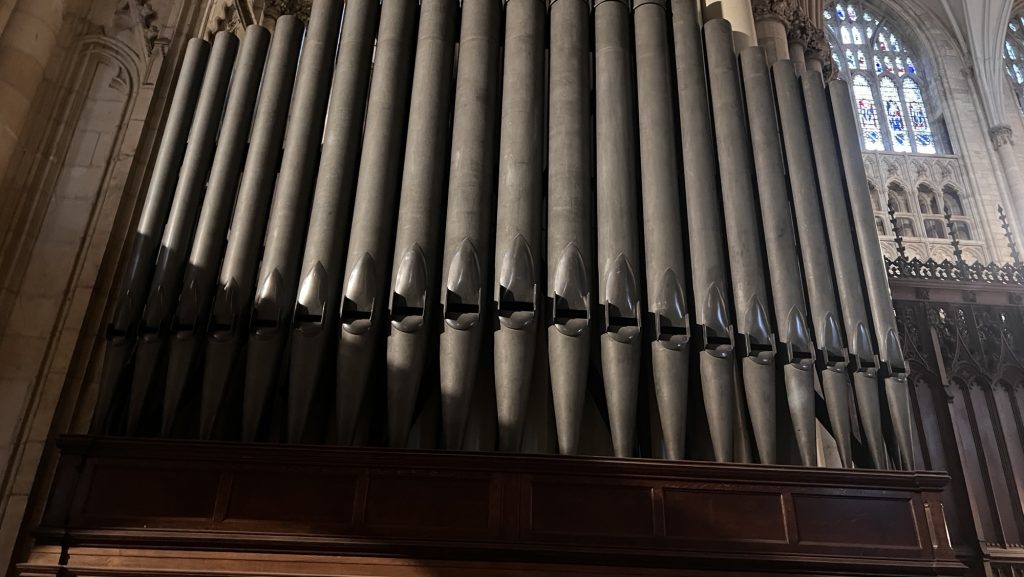
The first of our trips: 11th -12th Dec 2024 for Karen’s birthday we booked two nights in the Deans Close hotel and a carol service, so plenty of time to visit the minster, enjoy it as a Christmas concert venue and see the rest of York. As a bonus the trip ended with tea at Betty’s courtesy of Vernon.
The Carol service, hosted by xxx from Corrie was a real treat and our visit ( one of many we have made) focused on the internal aspects. Favourites being the chapter house (decked out with Christmas trees) and the east window with its enduring appeal.
Brief History :
York Minster, one of the largest and most magnificent cathedrals in Northern Europe, stands as a masterpiece of Gothic architecture and a testament to the religious and cultural history of England. Located in the historic city of York, the present structure was constructed between the 13th and 15th centuries, though its Christian origins date back to the 7th century. The cathedral is dedicated to Saint Peter and serves as the seat of the Archbishop of York, the second-highest office in the Church of England. Its grand scale and intricate design reflect both the spiritual ambition and the wealth of medieval York.
The architectural features of York Minster demonstrate the evolution of Gothic design in England. Its nave, completed in the 14th century, is known for its height and elegance, while the central tower and the Great East Window—completed in 1408—are among its most celebrated elements. The Great East Window, the largest expanse of medieval stained glass in the world, illustrates biblical scenes with extraordinary detail and craftsmanship. The Chapter House, with its octagonal shape and ornate carvings, exemplifies the decorative richness of the Decorated Gothic style. Flying buttresses, ribbed vaults, and pointed arches collectively contribute to the building’s structural ingenuity and aesthetic grandeur.
Beyond its architectural significance, York Minster has played a central role in the religious, political, and cultural life of the nation. It has been the site of royal ceremonies, theological debates, and major historical events, including periods of Reformation and restoration. Today, it remains an active place of worship and a major pilgrimage and tourist destination. The ongoing conservation work ensures the Minster’s preservation for future generations, while its presence continues to inspire awe and reverence as a symbol of faith, artistry, and English heritage.
